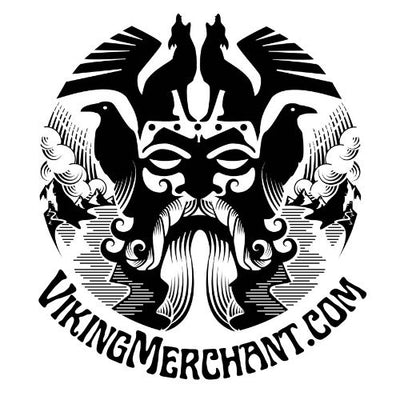The Hygienic Habits of Vikings: Debunking the "Dirty Barbarian" Myth
Posted by Amber Lee on
When conjuring up an image of a Viking, many imagine a rugged, dirty, and fierce warrior, fresh from battle with muddied armor and bloodied axes. While it's undeniable that the Vikings were formidable fighters, it might come as a surprise to learn that they were also quite particular about their personal hygiene.

In stark contrast to many medieval European societies, where bathing was often seen as a luxury or even avoided due to superstitions, Vikings placed significant importance on personal cleanliness. Historical records indicate that they bathed at least once a week. This ritual wasn't just a quick splash of water but often involved hot water baths, much like a modern-day hot bath experience.
Archaeological findings from Viking settlements have revealed a fascinating assortment of grooming tools. These include combs made of bone or antler, ear cleaners, tweezers, and even razors. Clearly, Vikings took pride in their appearance and ensured they were well-groomed, from trimmed beards to clean-shaven faces.
The Viking wardrobe wasn't just limited to plain, rough-spun clothes. They wore brightly colored garments, and there's also evidence to suggest they laundered their clothes regularly. They used various natural dyes to create vivid reds, blues, and yellows. To maintain these vibrant colors, the clothes would have needed regular washing.
Vikings used fragrant oils and herbal infusions not only to mask odors but also as early forms of antiseptics. These aromatic mixtures would keep them smelling pleasant and also offer some protection against infections—a critical necessity when venturing out on long voyages or into battle.
Beyond mere aesthetics, cleanliness had practical benefits for the Vikings. In an age where diseases could decimate populations, basic hygiene practices were critical.
Cleanliness also played a role in the Viking's social life. Being clean could be seen as a sign of respect towards others in the community and might have even been a marker of status. After all, someone who could afford good-quality grooming tools and take the time for regular baths was likely prosperous.
The "dirty barbarian" image we often associate with the Vikings couldn't be further from the truth. While they were undoubtedly fierce in battle, they also understood the importance of personal hygiene in their daily lives. Their grooming rituals and tools underline a society that was sophisticated, had a keen sense of community, and took pride in their appearance. The next time you envision a Viking, picture them not just as a warrior but also as a trendsetter in the early medieval world!
Share this post
- Tags: cleanliness, grooming, norse, viking
